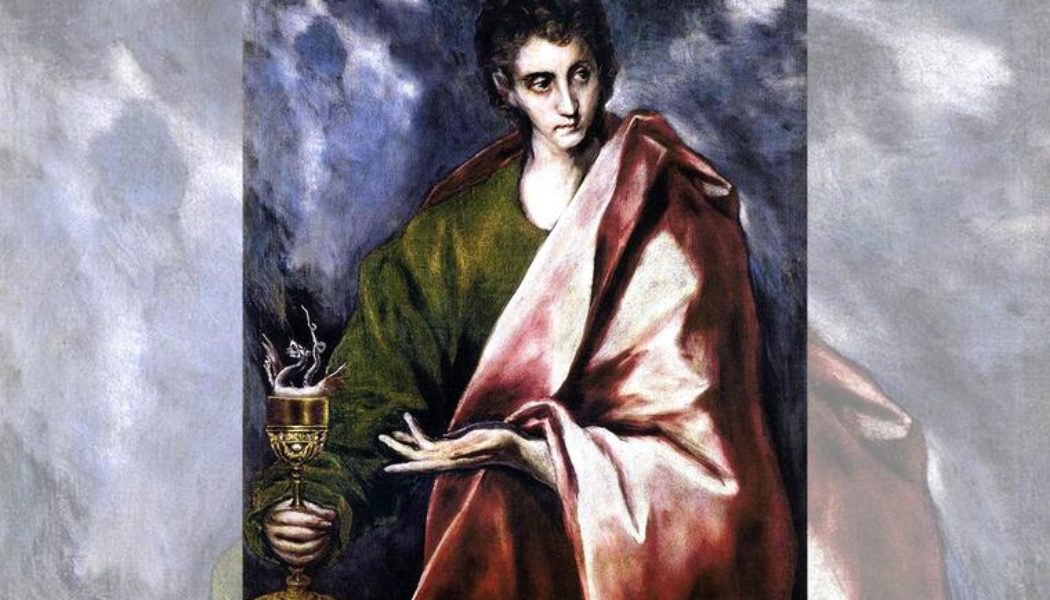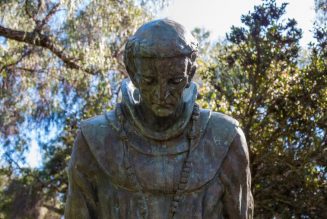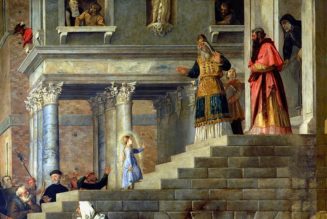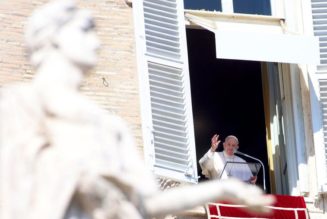
Having authored the “Saints and Art” series for more than a year, I would be remiss if I omitted my own patron, St. John the Evangelist.
Traditionally regarded as the author of the Fourth Gospel, of three epistles (1 John is the First Reading for most days in Christmastide) and the Book of Revelation, he is generally deemed the younger son of Zebedee and Salome and the younger brother of the Apostle James the Greater. Tradition, indeed, treats him as the youngest of the Apostles. He is also the “Beloved Apostle,” Jesus’ favorite, the only one not to desert him during his Passion and Death, the one to whom he entrusts his Mother.
James and John are called “sons of thunder,” which says something both about their supernatural zeal and natural temperaments: they’re the ones who suggest Jesus rain down fire from heaven on the towns that would not receive him. Over time, Jesus might temper them. That said, it takes someone really committed to something to get the job done, especially over the long haul, and John did: tradition says he was the last Apostle to die.
The brothers were working with their father, Zebedee, when Jesus switched their netting focus from fish to men. Tradition says they may have initially been disciples of St. John the Baptist — Messianic expectations ran high in first-century Israel. After being called as an Apostle, John forms part of the “inner core,” privileged to witness various events (the Transfiguration, the raising of the daughter of Jairus, etc.) together only with Peter and James. At the Last Supper, John is said to rest his head on Jesus. He accompanies Peter in the courtyard of the High Priest. He accompanies Mary at the foot of the cross when Peter runs away. In the post-Pentecostal Acts of the Apostles, Peter and John are often mentioned together. John may have also carried out intermittent ministry in Asia Minor (what is today Turkey), with some suggesting he might have finally left Israel by about AD 55.
That is where the biblical testimony to John ends. Some modern commentators argue that 2 and 3 John, along with the Book of Revelation, come from some other John than the Apostle, though tradition has regarded him as their author. The tradition — relying on the testimony of Apostolic Fathers like St. Justin Martyr — regards John as keeping the Blessed Mother with him until her Assumption, and spending his later years at Ephesus in what is today Turkey. The Book of Revelation speaks of John in exile, receiving that revelation on the Greek island of Patmos, off Turkey’s western coast. That would tally with his death about A.D. 100, just after the intense persecution of Christians under Emperor Domitian, after the end of which John was said to have returned to Ephesus to end his days there. John was the only Apostle not to die a martyr — it’s said that he suffered a living martyrdom at the foot of the cross.
That’s not to say he was not persecuted. One tradition, from Tertullian, holds that he visited Rome just before his exile to Patmos, where he was thrown into a cauldron of boiling oil only to emerge unscathed. John is sometimes depicted holding a chalice, because tradition says he was served a poisoned cup over which he made a sign of the cross, the poison emerging in the form of a serpent. Some suggest that image has survived in a snake in a cup in pharmaceutical art, though it’s more likely that druggists’ snakes have Greek mythological origins. One simple suggestion is an allusion to the demand by James and John for seats of honor at the Last Judgment, which prompts Jesus to ask whether they can “drink the cup I am going to drink” and both boastfully announce, “We can!” (Matthew 20:21-22). The problem with that attribution is that it is not applied to James, John’s partner in that request.
John’s attribute par excellence in Christian iconography is the eagle, symbolic of the heights to which the Gospel of John soars, a characteristic recognized at least as far back as St. Jerome. Unlike the Synoptic Gospels — Matthew, Mark and Luke — which share many events and material in common, John’s Gospel is in many ways unique. It is far more theologically sophisticated, far more organized in how it presents Jesus, e.g., what the Synoptics call “miracles” John calls “signs” — and is far more selective and limited in his accounting them (while admitting that “Jesus did many other things as well. If every one of them were written down, I suppose that even the whole world would not have room for the books that would be written” — John 21:25). Those he selects he develops at length for their theological significance, because each one discloses a new facet of Jesus’ identity: “the Way, the Truth and the Life,” “the Light of the World,” “the Living Water,” etc.
Love is also a prominent theme in the Johannine writings writ large, and tradition says that in his old age John — who became something like a beloved elder figure in the early Church — constantly repeated his injunction from the Epistle: “My children, let us love one another.” (John, of course, makes clear that loving one another and God means keeping his Commandments — see 1 John 5:3).
Because John was the youngest of the Apostles and yet the last to die, Christian art also tends to go to two extremes. He is occasionally depicted as an old man, the elder ecclesial figure mentioned above. But, most often, John is “ever young,” ever youthful, even sometimes on Patmos, when he would have been an advanced age. Young John is frequently depicted with wavy hair.
Our saint is depicted by the great artist of Spain, El Greco (1541-1614). As his name indicates, he was of Greek origin but spent most of his professional artistic life in Spain. That meant he brought Eastern/Byzantine influences into touch with what the art he met in Spain, fusing them together in a distinctive style that is uniquely El Greco. When you see it, you know it’s El Greco.
El Greco’s “St. John the Evangelist” is an oil painting from approximately 1605 now in Madrid’s Prado Museum. Present in the painting are the usual characteristics of El Greco: elongated bodies and especially hands and heads, a kind of vaporous quality to sacred figures, and a blank background (at best supplemented by some local landscape from the Spanish city where the work was going, though not in this painting).
The solitude of the sacred figure keeps with the Byzantine tradition of excluding the earthly from the heavenly, though — as noted — El Greco sometimes bends that rule with some cityscape background. In this case, the background is totally celestial, the Apostle illumined by a silvery blue light. It’s analogous to medieval Western sacred art, usually set on a gold background to emphasize the heavenly and spiritual as distinct from the earthly and temporal. (Given John’s ongoing polemic against Gnostic spiritualizers who would have denied the reality of the body and Incarnation, the depiction is a bit of a paradox.)
John, curly and ever young, though this event probably took place later in life, holds the poisoned cup handed to him which he has just blessed: his left hand indicates the poison emerging from the chalice, albeit not in the usual form of snakes but rather of dragons. Both animals are, after all, associated with the Devil: see Genesis 3:1-15; Revelation 12:1-16, the latter text perhaps accounting for El Greco’s choice of dragons. See also here.
What draws me most to St. John, what makes him “ever young” even for today’s reader, is his realism and his realistic focus on love. John walks with two feet on the ground. He repeatedly emphasizes the physical reality of the Crucified and Resurrected Christ (John 19:35-37; 20:27-28; 21:10-14) because he recognized the heresy of anti-physicality and anti-body thinking, which undermined the Incarnation, even in his day. He recognizes the primacy of charity in Christianity, but does not reduce it to sentimental goo: love leads to Calvary and, like John, the guts to accompany Christ there. Love is expressed in “keeping his Commandments.”
So, “let us love one another, for love is from God” … indeed, Is God (1 John 4:7-8).
Join Our Telegram Group : Salvation & Prosperity









